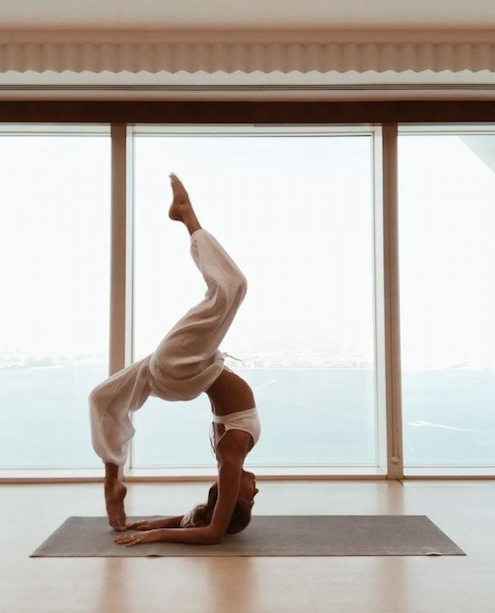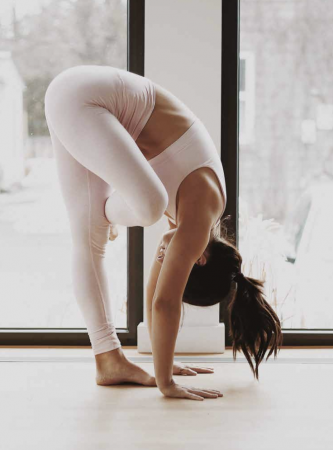Yoga has always been one of the best ways to empower both the mind and body. While some may dive into the world of yoga with the intention to lose weight, there are actually myriad other benefits to the ancient practice.
Yoga is a low-intensity exercise that can be just as effective as a high-intensity workout. However, the real roots of yoga lie in calming and strengthening the mind.
As for your body, yoga has a wealth of benefits stemming from its low-intensity nature. As personal trainer Nick Hewitt says, “low-intensity exercise puts less impact on your body, reducing the likelihood of injury, as well as delayed onset muscle soreness (DOMS).”
What is yoga?
‘Yoga is a collection of physical, mental, and spiritual practices or disciplines that originated 5 000 years ago in ancient India,’ says leading yoga teacher Sarah Highfield. ‘In the West, yoga is mostly known as a physical practice – designed to increase strength and flexibility – as well as for its breathing exercises.’
How yoga can empower your body
‘Yoga can help some people to lose weight, especially if they regularly practise a more dynamic style, such as vinyasa flow, ashtanga or power yoga, but it should be combined with a healthy eating plan,’ says Sarah.
‘While most styles of yoga are not strenuous enough to be considered “exercise”, it will definitely help you to strengthen your body and reduce stress (rises in stress hormone cortisol are linked to weight gain).’
Additionally, yoga can help you to become more conscious and aware of your body and lifestyle. Yoga can also have an impact on your diet – mindfulness can shine a light on your relationship with food – which can lead to healthier food choices.
Keep joints healthy during menopause
“A lack of the hormone oestrogen during menopause also plays a part in lower bone density, which is one reason why women suffer more from osteoporosis than men,” says Nick.
“With this in mind, lower-intensity exercise would certainly help with reducing the impact on those bones and joints. However, it is important to consider you fitness levels prior to menopause, and I would recommend seeking advice from a personal trainer or specialist to create a tailored plan.”
How to achieve the best results with yoga
“For best results, practise as often or as little as makes you happy. Yoga should never be an activity that you don’t look forward to,” points out Sarah.
Try to find a balance that works for you. For some, that might be a 30-minute session every day, while for others, it’s three 45-minute sessions per week, or it could even be one 60-minute session per fortnight.
“My recommendation is to do what you can, and you will find that if you enjoy it, you will end up doing more. If it’s not for you, then don’t worry,” says Sarah.
“I personally try to fit in three 45-minute sessions per week, and that helps to keep me feeling healthy and balanced.”
ALSO SEE: Walk vs run: which is the best exercise?
Low-intensity exercise and your health
“There is a lot less impact on the body during lower-intensity exercise – this means you are far less likely to cause injury to yourself and actually be able to train for longer,” says Nick.
With lower-intensity exercise such as yoga, your heart rate tends to stay at around 40 to 65% of your maximum heart rate.
“This means it also reduces the rise in blood pressure, so those who are pregnant or have blood pressure issues are more able to take part,” says Nick.
Heart rate measures how hard you are working during a workout – for high-intensity exercise, your heart rate may sit at around 70 to 85% of your maximum heart rate.
What about LIIT & HIIT?
You’ve probably heard of high-intensity interval training (HIIT) – short bursts of high-intensity exercise, followed by a short recovery period, but what about low-intensity interval training (LIIT)? Can a steady, extended workout be just as beneficial? Yes. Nick explains:
“Any exercise is better than none. High-intensity exercise has major benefits. However, a high-intensity workout often includes jumps and bounds, which need a good level of strength and fitness to perform safely without the risk of causing injury.”
If you’re working out at a lower intensity, you will need to up the duration to reap the same benefits. So if your usual HIIT session is 10 to 15 minutes long, an equivalent LIIT session may need to be 30 minutes to be as effective. You can try these wherever you are with apps, or search for HIIT and LIIT on YouTube.
Work out your maximum heart rate
“The simple way to calculate this is 220, minus your age to give a maximum heart rate,” says Nick.”So if you’re 50 and want to work at 50% for low-intensity training, you would guide your heart rate to 50% of your max heart rate. EG: 220-50 = 170, 50% of 170 = 85 beats per minute (BPM).”
Low-intensity exercise
Walking
Walking briskly is a great form of low-intensity exercise, as it can be done anywhere. “If you’re not very active, start with a stroll and gradually increase the pace and distance,” says Nick.
“Walking can help you build stamina, and improve your muscular endurance and body composition, burning any of those excess calories.”
T’ai Chi
“T’ai chi is great for your mental health and physical well-being, as it can help reduce stress, while improving your posture and strengthening your legs,” says Nick.
“It can also improve your balance and general mobility, which, if you are an older adult, will help reduce the risk of falls.”
Practitioners recommend that you attend two to three classes a week, and beginners should diligently practise 10 to 20 minutes a day. To try it at home, search ‘Tai Chi for Beginners’ on YouTube for a wealth of videos.
Swimming
Swimming is a great full-body workout, and can help you tone up as well. Swimming a few lengths works all the muscle groups, and you’ll get a good aerobic workout if you increase the pace.
Swimming can also help tone your body especially when done outdoors, as the cold water will make your body work harder to keep you warm – burning more calories in the process.
TIP: 150 MINUTES is the recommended amount of time spent each week doing moderate exercise.
ALSO SEE:
Studies show just 11 minutes of exercise daily can prevent an early death
Feature Image: Unsplash


